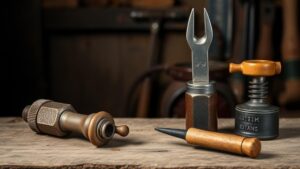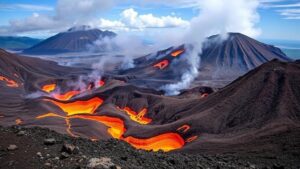How to Cross-Reference Folklore with Geology for Hidden Treasures
Introduction
The interplay between folklore and geology often reveals hidden treasures and lost artifacts, guiding treasure hunters and researchers alike. Folklore, encompassing myths, legends, and oral traditions, can provide insights into the historical context and geographical landscapes associated with geological formations. This article explores the methodologies for cross-referencing folklore with geological data to unearth hidden treasures, drawing on examples from various cultures around the world.
The Intersection of Folklore and Geology
Folklore serves as an essential narrative tool that reflects human experiences and environmental interactions. Many folk tales narrate events tied to specific geological features, such as mountains, rivers, or caves. Understanding these connections not only illuminates cultural heritage but also provides valuable information for treasure hunting.
The Role of Folklore in Locating Treasures
Many cultures attribute significant historical events to specific locations, often linking them to treasured artifacts or hidden riches. For example, the legend of the Lost Dutchman Gold Mine in the Superstition Mountains of Arizona originated from local folklore that suggested vast gold deposits in the area. Since its discovery in the late 19th century, numerous explorers have attempted to locate the hidden treasure, often utilizing geological surveys to guide their search.
Case Study: The Wreck of the Nuestra Señora de Atocha
Another prominent example is the 1622 shipwreck of the Spanish galleon Nuestra Señora de Atocha off the coast of Florida. Local folklore describes the ship carrying vast amounts of gold, silver, and precious jewels. In the 1980s, treasure hunter Mel Fisher applied both geological studies and regional folklore to successfully locate the wreck. Geologically, the study of ocean currents and seabed formations helped narrow down search areas based on where the galleon might have been carried during storms.
Methodologies for Cross-Referencing Folklore with Geological Data
The process of cross-referencing folklore with geological data requires systematic methodologies, including archival research, field studies, and the application of modern technology.
Archival Research
Treasure hunters and researchers should start with comprehensive archival research. This involves reviewing historical documents, local legend collections, and written accounts by explorers, which might provide clues about the locations of treasures. The Library of Congress and state historical societies often maintain rich repositories of such folklore.
Field Studies
Field studies involving geological surveys can substantiate the claims found in folklore. For example, researchers might employ geological mapping to identify formations mentioned in local legends. Utilizing tools like ground-penetrating radar or magnetometry can help locate buried treasures without extensive excavation.
Modern Technology
The integration of technology, such as Geographic Information Systems (GIS), allows for a detailed analysis of spatial relationships between folklore narratives and geological features. This approach was notably used in the quest for artifacts linked to the folk tales surrounding the Ancestral Puebloans in the Southwest United States, yielding successful excavation sites aligned with significant geological indicators.
Challenges and Considerations
While cross-referencing folklore with geology presents exciting opportunities, several challenges must be addressed:
- The reliability of folklore can vary significantly, with some stories altered or embellished over time.
- Geological features can evolve due to natural processes, which might mislead researchers if relied upon excessively.
- Balancing scientific rigor with cultural sensitivity is crucial, as folklore is often tied to a communitys identity.
Conclusion
The integration of folklore and geology provides a multidisciplinary approach to treasure hunting that can yield significant results. By leveraging archival research, field studies, and modern technologies, treasure hunters can effectively evaluate claims made in folklore against geological data. With sustained efforts and respect for cultural narratives, the search for hidden treasures using these methodologies can unveil not only material wealth but also enrich our understanding of human history and its relationship with the environment.
Actionable Takeaways
- Conduct thorough archival research to uncover local folklore related to your area of interest.
- Use geological mapping and surveys to verify the feasibility of treasure claims.
- Incorporate modern technologies to enhance your exploration efforts and data analysis.
By applying these strategies, researchers and treasure hunters can embark on informed quests that may lead to the discovery of hidden treasures, while respecting and preserving the cultural narratives that accompany them.


